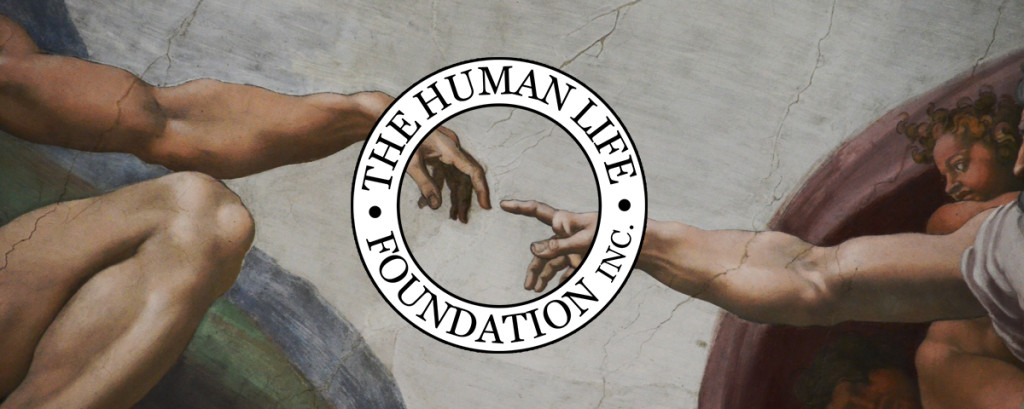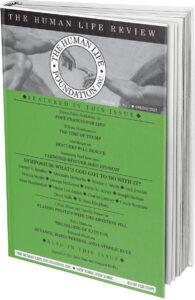The Assumption of the Blessed Virgin Mary
At least since the ninth century AD, the Assumption of the Blessed Virgin Mary has been celebrated on August 15, and there is evidence of faith in the Assumption dating from much earlier than that. So in 1950, Pope Pius XII defined this faith as follows (Apostolic Constitution Munificentissimus Deus): “We proclaim and define it to be a dogma revealed by God that the immaculate Mother of God, Mary ever virgin, when the course of her earthly life was finished, was taken up body and soul into the glory of heaven.”
Catholics believe that the Bible supports this faith, especially in the vision of St. John that is reported in the Book of Revelation (12:1): “A great sign appeared in the sky, a woman clothed with the sun, with the moon under her feet and a crown of twelve stars on her head.”
For those who may wonder about the relevance of this faith for Christians today, especially in our witness to the dignity of human life, I would like to suggest the following considerations.
We adults can usually, if we try, remember the first time as children that we lost our innocence and fell into sin. It may be the first time we told a lie; or defied our parents; or stole some little thing; or joined in bullying another child. Whatever it was, we all, early in life, had to find some way of dealing with a sense of guilt, of being under judgment, and exposed to punishment. Happy indeed is the child who is brought up to believe in a God who forgives. As a priest I know that children’s confessions are among the best we hear, because of their simplicity and trust.
As children grow into adults, whether in the faith or not, their attention is gradually turned to other concerns than how to clear their consciences: We try to figure out how to be successful in school or on the playing field; how to shine among our peers and in our personal relationships; how to meet the challenges of marriage and of parenthood. Every human being looks for happiness, and thinks of different ways to achieve it—or at least to avoid unhappiness. But again, happy indeed is the person who has discovered that happiness consists, whatever the circumstances of one’s life, in being right with God, and at peace with one’s neighbor and oneself.
I was brought up in a good Protestant home to believe in God, in the forgiveness of sins, and in the prime importance of having a good conscience. I was brought up to believe that only one human being was entirely free from sin—that was our Savior Jesus Christ; but he was free from sin because he was divine, essentially different from ourselves. Not until I discovered the Catholic faith did I realize that one other person, Mary, the Lord’s mother, was entirely free from sin as well, by a special grace from God preparing her to be the mother of God’s Son. By nature, Mary was just like ourselves, no more than human, not divine.
But Mary’s freedom from sin meant that she never felt the sting and weight of guilt or the fear of punishment. She never had to look for ways to deal with a bad conscience, and therefore always had deep happiness and peace, despite the many challenges and sorrows of her life. It is hard to imagine such perfect happiness and peace, to be entirely free from sin. However, it is wonderful to know that it is possible, and, by the grace of God, it is possible for us in the midst of life, just as it was actual for Mary from the first moment of her life.
What I have been describing is Mary’s Immaculate Conception. Her Assumption at the end of her life follows from this beginning. God’s plan of salvation for the human family includes more than freedom from sin—that is the negative part of it. The positive part is what we profess in the Creed: the “resurrection of the body and life everlasting.” We believe that in her Assumption, this glorious promise has been realized for Mary in advance of us, just as her freedom from sin was realized for Mary in advance of us. So, our blessed Mother stands for what God has in store for each of us who have been baptized into Jesus’ death and resurrection, and have had our sins forgiven.
St. Paul writes in I Corinthians (15:22): “Just as in Adam all die, so too in Christ shall all be brought to life.” And the assurance of that truth was given to St. John in his vision of a “great sign [appearing] in the sky, a woman clothed with the sun.” He saw Mary standing radiantly before him as the sign of God’s tremendous promise to each one of us who put our faith in her Son. God clothed her human lowliness in divine glory—and so he will do for us, his children. It is almost too much to conceive of, such supreme, unclouded happiness, but we can believe in it, because we have this sign: a “woman clothed with the sun.”









